Science Reveals God’s Majesty Series
Some time ago, I tried to explain the concept of inherited sin to someone. I went through the whole spiel, you know, about Adam and Eve and the serpent in the Garden of Eden. I explained that it was at that point in history when sin (a rebellious nature or genetic change) entered the world. Like an inherited disease, eventually it spread throughout the population as the world grew.
After disobeying God, Adam and Eve were no longer perfect; they carried a malicious trait in their makeup and had no way of reversing their error, and in time they died just as God foretold. But before their death, since they could not pass anything along to their children except that which they had themselves, sin and death became an inherited trait, which was continually passed down, even to this age. “Therefore, just as sin came into the world through one man, and death through sin, and so death spread to all men because all sinned.” (Romans 5:12, ESV).1 So, the earth has always been inhabited by a population of sinful and dying people.
 I believe all this by faith, but not everyone has that kind of trust in God, especially newer Christians, so this person said, “That may sound plausible on the surface, but can you show me some proof; does science prove this can happen?” Well . . . I couldn’t prove it; there were not enough scientific facts to reinforce this opinion. I only had God’s word for it.
I believe all this by faith, but not everyone has that kind of trust in God, especially newer Christians, so this person said, “That may sound plausible on the surface, but can you show me some proof; does science prove this can happen?” Well . . . I couldn’t prove it; there were not enough scientific facts to reinforce this opinion. I only had God’s word for it.
I’ve always felt science was not an enemy of religion and in my mind, science and Christian doctrine can be accommodated together. But, when science didn’t have an answer, I relied upon my faith, knowing God’s word was correct. Sooner or later, I felt, there would be emerging proof to explain all the stories in the Bible.
I’ve tried to show this in many of my articles. One such example is “Lot & His Daughters: Homosexuals, Brimstone, Incest,” which scientifically explains many of the events of Sodom and Gomorrah through the eyes of modern geology, chemistry, and archeological research.2 I believe God works his miracles using the same physical laws he used in creating this universe, but we just don’t understand them all, yet. Each time science proves some aspect of the Bible, it is like God saying, “I told you so. Why did anyone doubt me?”
Now, a long time after that person challenged me, I can finally answer the question, “can you show me some proof; does science prove this can happen?” Well, yes I can. A new science, called epigenetics (ep•i•ge•net•ics), proves that physical and psychological characteristics can change the activity of genes during our own lifetime, and then get passed along into the gene pool. Scientists who work in epigenetics explore these mechanisms and how they work.3 One thing they have learned is we can inherit traits from our ancestors, as well as create new sinful behavior to be passed along to others.
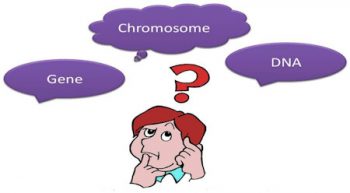 Previously, I have hinted about this new science which could explain inherited sin, in several articles over the last four years.4 But this science has advanced enough that I believe it now proves that inherited sin is, indeed, possible and this is the reason for this current discourse devoted to the subject.
Previously, I have hinted about this new science which could explain inherited sin, in several articles over the last four years.4 But this science has advanced enough that I believe it now proves that inherited sin is, indeed, possible and this is the reason for this current discourse devoted to the subject.
I will attempt to demonstrate this, without too much scientific and medical jargon, but there are a few terms necessary for understanding, so I will explain them first. Be aware, though, this subject is complicated, so we are examining only the very basics, a simple overview. For greater detail, follow the links at the end of this article.
Genetics is the biological study of heredity in general and of genes in particular, and concerns genetic variation. Most of the mechanisms of heredity remained a mystery until the 19th century, when genetics as a systematic science began.5

DNA (deoxyribonucleic acid) is a large molecule composed of two chains that coil around each other. “DNA contains our hereditary material and our genes, and it’s what make us unique.”6 It is made of units that line up in a particular order. The order of these units carries genetic information,7 similar to how the order of letters and spaces on a typed page produces words that carry information.
Basically, a chromosome consists of a long strand of DNA containing many genes. They are located inside our cells. Each chromosome has a constriction point, dividing it into two sections producing many characteristic shapes.8

The genes carry the blueprints for building everything in our bodies. A gene is a region or section of DNA that specifies and assigns a function, like specific physical characteristics (eye or hair color, height or weight, blood type, even resistance to diseases, and so forth). They are, sort of, a recipe that tells the cells how to function and replicate. To pass genetic traits from one generation to the next, they must first produce copies of themselves.9
Epigenetics
The term epigenetics was coined in the 1940s by a British scientist, who used it to speculate how genetic components might interact with their surroundings. But it wasn’t until fifty years later before serious research was even possible, and not until 2008 was a consensus definition proposed to explain this new science. I’ve followed the research ever since I first read an article mentioning it in Natural News back in 2013.10 And there has been a lot of research since that time.
The word epigenetic literally means extra growth in addition to the regular changes in DNA sequence.11 In other words, epigenetic activity makes physical structure changes in chromosomes without changes in the DNA sequence itself. They make these changes by acting as switches to control the genes and determine which of these genes get turned on or off (called gene expression).12 As an analogy (although a rather lame one), a home is a home, but you can change it to make it safe for walking around at night if you turn on the lights. Likewise, you can make it less safe, if you turn the lights off — either way, it is still a home. This extra growth attached to the DNA sequence, adds to the traditional genetic basis for inheritance.
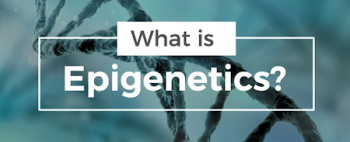 Research has found that this gene expression (or direction) can affect or be affected by a great number of things, including environment, drugs, foods, events in our lives, including social, traumatic, and stressful situations — and thousands more, not counting the different possible combinations. Other studies have found that epigenetic effects are not just carried from ancient generations to new generations, but can originate during the full course of a human life span, so the things you do today, good or bad, can flip switches and make DNA changes that can be passed down to the next generation.13
Research has found that this gene expression (or direction) can affect or be affected by a great number of things, including environment, drugs, foods, events in our lives, including social, traumatic, and stressful situations — and thousands more, not counting the different possible combinations. Other studies have found that epigenetic effects are not just carried from ancient generations to new generations, but can originate during the full course of a human life span, so the things you do today, good or bad, can flip switches and make DNA changes that can be passed down to the next generation.13
The study of epigenetics is a new science, and although complicated, we can get an overview and simplify the explanation to some extent. It is much more involved than what is taught in high school biology class, by far, so if you would like a real grasp of this subject, please use the references noted at the end of the article.
A Story from the Bible, when Epigenetics was Used
In Genesis, Jacob is sent away by Isaac to find a wife. Arriving at his destination, he meets Rachael, a daughter of Laban, his relative. Wishing to marry her but unable to pay the bride price, he agrees to work seven years for her father. This included taking care of Laban’s livestock.
Jacob worked the seven years agreed upon and then the wedding was planned. Laban was not a fair man and he tricked Jacob into marrying his older daughter, Leah. Laban then required another seven years of work to purchase his younger daughter, Rachael, whom Jacob really wanted. If you don’t know the story, it is well worth a read. The full story is told in Genesis chapters 28, 29, 30, and 31. There is a lot of drama, including, as you may well imagine, animosities between the sisters, Leah and Rachel. Eventually Jacob had two wives and a large family.
But the reason for bringing up this story, is because there is a hint of the use of epigenetics in stock breeding by Jacob. The science, of course, was not known to him, but the method used by Jacob was directed by God, who invented the science.
Jacob wants to leave with his wives and children. But Laban wants him to stay, working to Laban’s own advantage and asks Jacob, “What shall I give you?” Jacob replies by saying he will pasture the sheep, if he is allowed to keep for himself, certain specific members of the livestock as wages.
 “If you will do this for me, I will again pasture your flock and keep it: let me pass through all your flock today, removing from it every speckled and spotted sheep and every black lamb, and the spotted and speckled among the goats, and they shall be my wages.” (Genesis 30:31-33). Unknown to Laban, this was Jacobs ‘pay back’ plan.
“If you will do this for me, I will again pasture your flock and keep it: let me pass through all your flock today, removing from it every speckled and spotted sheep and every black lamb, and the spotted and speckled among the goats, and they shall be my wages.” (Genesis 30:31-33). Unknown to Laban, this was Jacobs ‘pay back’ plan.
To foil Jacob’s plans, Laban removed and hid animals of those descriptions, so Jacob had no good breeding stock. But unknown to Laban, Jacob knew how to change the animals being born. “He specifically bred the more vigorous animals to be variegated, but allowed the more feeble animals to produce solid-colored young. While his flock remained healthy and vital, Laban’s became less fit. Finally, we are told that Jacob’s success with the flocks made him so wealthy that he could afford slaves and pack animals.”14 What extra steps did he take to accomplish such a feat? How did he produce variegated animals, when he had none to start his breeding program? Here is the hint that God made sure was recorded in scripture.
“Then Jacob took fresh sticks of poplar and almond and plane trees, and peeled white streaks in them, exposing the white of the sticks. He set the sticks that he had peeled in front of the flocks in the troughs, that is, the watering places, where the flocks came to drink. And since they bred when they came to drink, the flocks bred in front of the sticks and so the flocks brought forth striped, speckled, and spotted. And Jacob separated the lambs and set the faces of the flocks toward the striped and all the black in the flock of Laban. He put his own droves apart and did not put them with Laban’s flock. Whenever the stronger of the flock were breeding, Jacob would lay the sticks in the troughs before the eyes of the flock, that they might breed among the sticks, but for the feebler of the flock he would not lay them there. So the feebler would be Laban’s, and the stronger Jacob’s.” (Genesis 30:37-42).
Now, most people skim through this scripture believing that it is all unnecessary detail and not really very relevant to the story. Some suggest it is nothing other than superstition or folk law. “However, it has been recently proposed that Jacob’s use of the branches actually has an explanation in epigenetics—heritable changes in gene expression without a change in an organism’s DNA.”15
Since it is known, through epigenetic research, that nutrition can affect gene changes, “Jacob’s stripping the bark from the branches may have exposed some nutrient that was then in the drinking water of the pregnant animals, thereby changing the color of the coats of the young that they bore. Jacob also separated the flocks so that his animals did not mate with Laban’s, thereby limiting the number of fully dark animals that would be born in his own flock.”16 Jacob must have had great intelligence, as well as God’s help.
We can Control DNA’s Expression
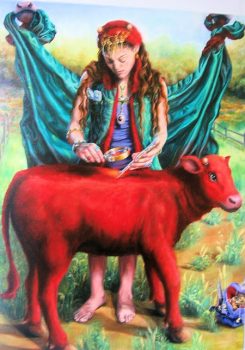 There had always been weak attempts to justify Jacob’s breeding program using only general biological expertise, but epigenetics have added new scientific knowledge for believing it was actually gene regulation for changing the fur color. Concerning the tree bark from “poplar and almond and plane trees,” Dr. Josh Klein, a plant pathologist at Volcani Research Institute of the Israeli Ministry of Agriculture, had much to say. There are fungi as filaments under the bark of these trees that are host-specific. “Peeling the bark could make these fungi available for water extraction of their components.” It is only with the recent arrival of epigenetics science that this story can finally be understood, especially in prenatal nutritional effects on epigenetic gene regulation of fur color.17
There had always been weak attempts to justify Jacob’s breeding program using only general biological expertise, but epigenetics have added new scientific knowledge for believing it was actually gene regulation for changing the fur color. Concerning the tree bark from “poplar and almond and plane trees,” Dr. Josh Klein, a plant pathologist at Volcani Research Institute of the Israeli Ministry of Agriculture, had much to say. There are fungi as filaments under the bark of these trees that are host-specific. “Peeling the bark could make these fungi available for water extraction of their components.” It is only with the recent arrival of epigenetics science that this story can finally be understood, especially in prenatal nutritional effects on epigenetic gene regulation of fur color.17
In another story, which is also usually glossed over, is the one about the red heifer in the book of Numbers. The LORD spoke to Moses and instructed, “Tell the people of Israel to bring you a red heifer without defect, in which there is no blemish, and on which a yoke has never come.” (Numbers 19:2). “The red heifer was slaughtered and its body burned. The ash was placed in water and sprinkled on one who was defiled (ritually contaminated) by contact with a corpse. The ash of the red heifer in water purified the one who was defiled.”18
The Talmud has a peculiar story of how the red heifer (a biological anomaly) was bred. A cup of red liquid was passed in front of a pregnant normal cow. It was a 18th century German Rabbi who wrote, “just like with the story of Jacob and the sheep.” Maybe the pregnant cow drank the red liquid. That is very interesting.19 This red liquid was prepared in a particular way containing specific ingredients20 that might have been used in gene manipulation.
Original Sin
The term ‘original sin’ does not appear in the Bible, but is a theological issue which emanates from Genesis 3. “This doctrine states that all of humanity is considered guilty because of Adam’s sin in the garden of Eden. It is mostly drawn from Paul’s argument in Romans 5:12–21.”21 Read it all, but Paul’s most powerful statement is: “Therefore, just as sin came into the world through one man, and death through sin, and so death spread to all men because all sinned. Therefore, as one trespass led to condemnation for all men, so one act of righteousness leads to justification and life for all men.” (Romans 5:12, 18).
 Although some today object to this original sin idea, it is not a new concept. The doctrine was first popularized by the early church father Augustine of Hippo. Augustine’s contemporary, Pelagius, opposed the doctrine, arguing that Adam’s sin set a bad example. Reformers like Luther and Calvin echoed Augustine’s view of original sin, with Calvin stating, “Adam was not merely a progenitor, but, as it were, a root, and that, accordingly, by his corruption, the whole human race was deservedly vitiated.”22
Although some today object to this original sin idea, it is not a new concept. The doctrine was first popularized by the early church father Augustine of Hippo. Augustine’s contemporary, Pelagius, opposed the doctrine, arguing that Adam’s sin set a bad example. Reformers like Luther and Calvin echoed Augustine’s view of original sin, with Calvin stating, “Adam was not merely a progenitor, but, as it were, a root, and that, accordingly, by his corruption, the whole human race was deservedly vitiated.”22
The Catholic Church teaches that the misery which oppresses humankind and their inclination toward evil and death cannot be understood apart from their connection with Adam’s sin and the fact that he has transmitted this sin to all of us. The Catechism of the Catholic Church (Paragraph 408) states, “The consequences of original sin and of all men’s personal sins put the world as a whole in the sinful condition aptly described in St. John’s expression, ‘the sin of the world’ [John 1:29].”23
Was this all God’s plan from the beginning? Referencing the original Genesis 3 event, when Satan caused humans to sin, Christian writer Charles Ryrie wrote the following. “According to the Bible, then, sin originated in an act of free will in which the creature deliberately, responsibly, and with adequate understanding of the issues chose to corrupt the holy character of godliness with which God had endowed his creation.… Satan sinned necessarily. Sin was found in Satan; yet he was created perfect. God is not the blameworthy cause of Satan’s sin; yet it was included in his plan.”24
Sins of the Father
Many have heard of the ‘generational curses’ or the ‘sins of the father’. This concept is from scripture such as “Our fathers sinned, and are no more; and we bear their iniquities.” (Lamentations 5:7). Or from the second commandment when the LORD said he would not tolerate affections for any other gods. “You must not bow down to them or worship them, for I, the LORD your God, am a jealous God who will not tolerate your affection for any other gods. I lay the sins of the parents upon their children; the entire family is affected—even children in the third and fourth generations of those who reject me.” (Exodus 20:5, NLT).
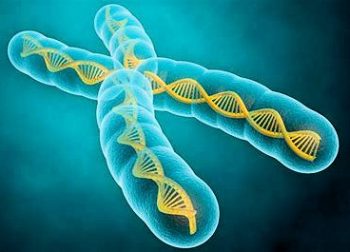 Some people use this type of scripture as a weak proof for Charles Darwin’s evolutionary theory, but others are not so sure. In light of epigenetics, generational curses take on new meaning. Dr. Tim Jennings, a neuropsychologist, stated, “The choices we make – the foods that we eat, the things that we watch – can affect how the DNA is expressed. When we have kids, we pass on the sequence to them. So if we become addicted to stuff, we can pass along to our children gene instructions that make them more vulnerable to addictions.” Jennings went on to say, “Which is more scientifically accurate – the Bible or Charles Darwin? Well guess what? It’s the Bible.”25
Some people use this type of scripture as a weak proof for Charles Darwin’s evolutionary theory, but others are not so sure. In light of epigenetics, generational curses take on new meaning. Dr. Tim Jennings, a neuropsychologist, stated, “The choices we make – the foods that we eat, the things that we watch – can affect how the DNA is expressed. When we have kids, we pass on the sequence to them. So if we become addicted to stuff, we can pass along to our children gene instructions that make them more vulnerable to addictions.” Jennings went on to say, “Which is more scientifically accurate – the Bible or Charles Darwin? Well guess what? It’s the Bible.”25
The good news is that even if epigenetic modifications are passed on to your offspring, they are reversible. In other words, it is possible to break the curse. “You can go either way. We can pass along both positive things in our life and/or negative, depending on the choices we make in life,” said Jennings.26
Charles Darwin thought that all life is related and has descended from a common ancestor through natural selection over millions of years. That is nothing more than a general theory, as there is still no established proof that can be demonstrated. But epigenetics is a real science that is establishing some solid proofs in research laboratories. So, here is a thought: could Darwin actually have observed gene mutations or gene switching — elements of epigenetics — when he visited the Ecuadoran Galapagos Islands nearly two hundred years ago?27
We can Change DNA Instructions
As one author stated, “So, why would it be so hard to believe that Paul was right on target when he implied, in Romans 5, that something happened to all humanity because of Adam’s sin.”28 It is not really much of a stretch to accept this view as scientifically feasible. The most astounding idea, coming out of all this information, is that if we inherit sin, we should also be able to inherit righteousness, too. This adds another dimension to the whole ‘original sin’ idea.
 As I was researching and preparing this article, there were several verses that gave me newer insight than they had before. For instance, “Whoever makes a practice of sinning is of the devil, for the devil has been sinning from the beginning. The reason the Son of God appeared was to destroy the works of the devil. No one born of God makes a practice of sinning, for God’s seed abides in him; and he cannot keep on sinning, because he has been born of God.” (1 John 3:8-9).
As I was researching and preparing this article, there were several verses that gave me newer insight than they had before. For instance, “Whoever makes a practice of sinning is of the devil, for the devil has been sinning from the beginning. The reason the Son of God appeared was to destroy the works of the devil. No one born of God makes a practice of sinning, for God’s seed abides in him; and he cannot keep on sinning, because he has been born of God.” (1 John 3:8-9).
Since no human can return to being an image of God, apart from a complete renewal of their total being, Jesus Christ was the means by which this total renewal could take place, and the image of God could be restored to humanity.29 Just following Jesus, can change our DNA expression from evil to righteousness.
Although many of our characteristics can be regarded as related to our genes, their control should be described as epigenetic, because they are the result of actions coming at a later time. Every year scientists make advancements in correcting inherited diseases, so we have proof that physical genetic defects can be treated. A fine example is that inherited diabetes can be treated with insulin.30
So, if we can treat physical defects with physical manipulation, why not spiritual defects, like sin, with spiritual manipulation? “No temptation has overtaken you that is not common to man. God is faithful, and he will not let you be tempted beyond your ability, but with the temptation he will also provide the way of escape, that you may be able to endure it.” (1 Corinthians 10:13). We have control over epigenetics. We have free will and God has given us final control over our sins. It may not be easy, but we can make our current life Godly and insure that we pass this trait onto our children.
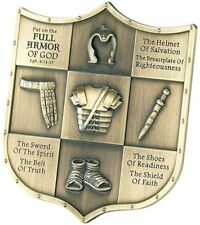 Satan is the spiritual cause behind the sinful temptations we face today, just as it was in the Garden of Eden, so long ago. However, those temptations are not beyond our ability to resist. The Apostle Paul has provided information concerning the tools we need to fight off spiritual influences of the devil. He realized where sinful influences come from, so he told us of the spiritual armor needed for protection.
Satan is the spiritual cause behind the sinful temptations we face today, just as it was in the Garden of Eden, so long ago. However, those temptations are not beyond our ability to resist. The Apostle Paul has provided information concerning the tools we need to fight off spiritual influences of the devil. He realized where sinful influences come from, so he told us of the spiritual armor needed for protection.
The apostle says, “Therefore take up the whole armor of God, that you may be able to withstand in the evil day, and having done all, to stand firm” (Ephesians 6:13), and then describes the various pieces of Christian armor as though he is equipping a soldier for battle.
“Stand therefore, having fastened on the belt of truth, and having put on the breastplate of righteousness, and, as shoes for your feet, having put on the readiness given by the gospel of peace. In all circumstances take up the shield of faith, with which you can extinguish all the flaming darts of the evil one; and take the helmet of salvation, and the sword of the Spirit, which is the word of God.” (Ephesians 6:14-17).
For an in-depth study about Satan’s powers and God’s blueprint for protection, see the article titled “Ephesians 6: Evil Cosmic Powers & the Armor of God” listed in References & Notes at the end of this article.31
Conclusion
This is only a brief and simple overview of a very complicated science, but I think this has presented a basic understanding and implied the importance of how epigenetics make us all very unique creatures. Basically, epigenetics control our genes and determine which of these genes get turned on or off. Influences upon this process come from your experiences, reactions, addictions, habits, or even what you think.
We have received much genetic information from our parents and will probably pass it to our children. Along the way, we will create new variances. But most important, within ourselves, is the possibility to eliminate the sinful traits and accept more righteous ones. God has endowed us with this spiritual ability. Eliminate the dark spirit of Satan, and shine with the bright spirit of Jesus.
 The prophet Daniel was told, “shut up the words and seal the book, until the time of the end. Many shall run to and fro, and knowledge shall increase.” (Daniel 12:4). Are we living in the time of the end? Is this predicted knowledge increase preparing us for the new world ruled by Christ? Could eternal life just be God providing a way to flip ‘on’ or ‘off’ some biological switch attached to our DNA? Now, that is something to think about!
The prophet Daniel was told, “shut up the words and seal the book, until the time of the end. Many shall run to and fro, and knowledge shall increase.” (Daniel 12:4). Are we living in the time of the end? Is this predicted knowledge increase preparing us for the new world ruled by Christ? Could eternal life just be God providing a way to flip ‘on’ or ‘off’ some biological switch attached to our DNA? Now, that is something to think about!
Okay, what about a song to go with this article? I thought it would be impossible to find one, but no, it wasn’t — I did find one. The problem is that although the video is really cool, it has no religious foundation and is filled with scientific jargon. So, then I came upon a seven minute clip from a Public Broadcast System (PBS) television program on epigenetics, which explains this new science very well. In fact, toward the end of the clip it demonstrates fur color changes in mice, similar to what Jacob did with livestock in the story from Genesis. Now, that is really cool.
As I didn’t know which to use, I finally decided to list both. The PBS program on epigenetics32 for a great explanation of the science and, for those of you who are technically inclined, a jazzy piece called “Epigenetics Song” by HOWYFASWED.33 Both are ‘closed captioned’ in English, if you wish to follow along. (See listings below in References and Notes.)
![]()
Copyright © 2020, Dr. Ray Hermann
OutlawBibleStudent.org
→ Leave comments at the end, after ‘References & Notes’.
You can see our basic rules for comments by clicking “The Fine Print” on the top menu bar.
Reference & Notes
- Unless otherwise indicated, all scripture quotations are taken from The Holy Bible, English Standard Version (ESV), ©2001 by Crossway, a publishing ministry of Good News Publishers. The text has been used by permission. All rights reserved.
- Hermann, Ray, “Lot & His Daughters: Homosexuals, Brimstone, Incest”, (The Outlaw Bible Student, OBS, 22 July 2018), https://outlawbiblestudent.org/lot-his-daughters-homosexuals-brimstone-incest/
- “What is Epigenetics?” (Psychology Today, retrieved 30 May 2020), https://www.psychologytoday.com/us/basics/epigenetics
- A) “Sin, DNA, and Our Intelligent Heart”, https://outlawbiblestudent.org/sin-dna-and-our-intelligent-heart/
B) “What do you mean, Christ died for our sins?”, https://outlawbiblestudent.org/what-do-you-mean-christ-died-for-our-sins/
C) “Drugs & Medicines in the Bible: Are they Related to Witchcraft & Sorcery? — and What about Those Miracles?”, https://outlawbiblestudent.org/drugs-medicines-in-the-bible-are-they-related-to-witchcraft-sorcery-and-what-about-those-miracles/ - Winchester, A. M., “Genetics”, (Encyclopædia Britannica, Encyclopædia Britannica Inc., 15 May 2020), https://www.britannica.com/science/genetics
- Seladi-Schulman, Jill, “DNA Explained and Explored”, (Healthline, 14 August 2019), https://www.healthline.com/health/what-is-dna
- “DNA” (Wikipedia, Wikipedia Foundation Inc., 30 May 2020), https://en.wikipedia.org/wiki/DNA
- “What is a chromosome?” (U.S. National Library of Medicine, NIH, 26 May 2020), https://ghr.nlm.nih.gov/primer/basics/chromosome
- “Gene”, (Wikipedia, Wikipedia Foundation Inc., 26 May 2020), https://en.wikipedia.org/wiki/Gene
- Wright, Carolanne, “Confirmed by Science: You really can change your DNA,” (Natural News, September 21, 2013), https://www.naturalnews.com/042157_DNA_transformation_science_epigenetics.html
- Weinhold, Bob, “Epigenetics: The Science of Change”, (Environmental Health Perspectives, vol. 114, no. 3, March 2006), also available online at: https://www.ncbi.nlm.nih.gov/pmc/articles/PMC1392256/
- Rettner, Rachael, “Epigenetics: Definition & Examples”, (Live Science, 24 June 2013), https://www.livescience.com/37703-epigenetics.html
- Weinhold, Bob, “Epigenetics: The Science of Change”, (see above).
- Steinmann, Andrew E., Genesis: An Introduction and Commentary, The Tyndale Commentary Series, (Ed.) David G. Firth, (London: Inter-Varsity Press, 2019), vol. 1, p. 290.
- Ibid.
- Ibid., pp. 289-290.
- Backon, Joshua, “Jacob and the Spotted Sheep: The Role of Prenatal Nutrition on Epigenetics of Fur Color”, (Jewish Bible Quarterly, Jewish Bible Association, Jerusalem, Israel), 1 October 2008, vol. 36, no. 4. Also available online at: https://www.thefreelibrary.com/Jacob+and+the+spotted+sheep%3a+the+role+of+prenatal+nutrition+on…-a0229303194
- Ibid.
- Ibid.
- “Red heifer”, (Wikipedia, Wikipedia Foundation Inc., 29 May 2020), https://en.wikipedia.org/wiki/Red_heifer
- Mangum, Douglas; Custis, Miles; Widder, Wendy, “Genesis 1–11″, Lexham Research Commentaries, (Bellingham, WA: Lexham Press, 2012), Ge 3:1–24.
- Ibid.
- Smith, Mark S., The Genesis of Good and Evil: The Fall(out) and Original Sin in the Bible, (Louisville, KY: Westminster John Knox Press, 2019), p. 3.
- Ryrie, Charles Caldwell, Basic Theology: A Popular Systematic Guide to Understanding Biblical Truth, (Chicago, IL: Moody Press, 1999), pp. 163-164.
- “Science Confirms Bible on Generational Curses?” (Conquer Series, retrieved 4 June 2020), https://conquerseries.com/science-confirms-bible-on-generational-curses/
- Ibid.
- Brooks, Carol, “Original Sin and Epigenetics”, (In Plane Site, retrieved 31 May 2020), http://www.inplainsite.org/html/original_sin_or_epigenetics.html#EpiGen-10
- Ibid.
- Ibid.
- Berry, R. J., God’s Book of Works: The Nature and Theology of Nature, Glasgow Gifford Lectures, (London; New York: T&T Clark, 2003), pp. 65-66.
- Hermann, Ray, “Ephesians 6: Evil Cosmic Powers & the Armor of God”, (The Outlaw Bible Student, OBS, 17 February 2019), https://outlawbiblestudent.org/ephesians-6-evil-cosmic-powers-the-armor-of-god/
- “PBS on Epigenetics”, (Public Broadcasting Service, (USA), uploaded 30 September 2009 by a channel called ‘transformetics’, no other information available), https://youtu.be/Xjq5eEslJhw
- “Epigenetics Song”, Artist: HOWYFASWED, (uploaded 7 November 2016 to a channel called ‘Ollie Happyness’, no other information available), https://youtu.be/SBW9M35JVJA


3 thoughts on “The Science of Sin — is Evil Inherited?”